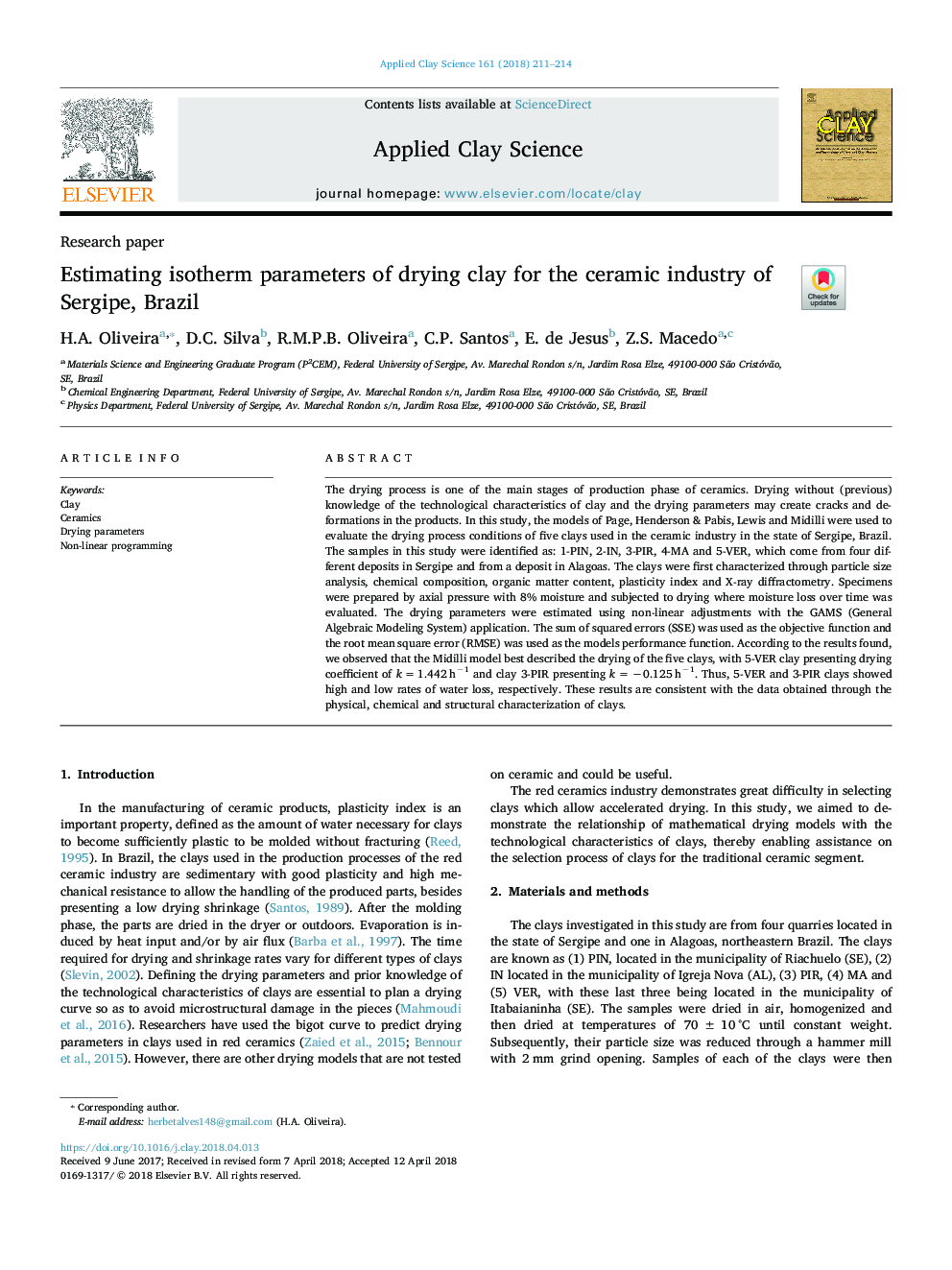| Article ID | Journal | Published Year | Pages | File Type |
|---|---|---|---|---|
| 8045762 | Applied Clay Science | 2018 | 4 Pages |
Abstract
The drying process is one of the main stages of production phase of ceramics. Drying without (previous) knowledge of the technological characteristics of clay and the drying parameters may create cracks and deformations in the products. In this study, the models of Page, Henderson & Pabis, Lewis and Midilli were used to evaluate the drying process conditions of five clays used in the ceramic industry in the state of Sergipe, Brazil. The samples in this study were identified as: 1-PIN, 2-IN, 3-PIR, 4-MA and 5-VER, which come from four different deposits in Sergipe and from a deposit in Alagoas. The clays were first characterized through particle size analysis, chemical composition, organic matter content, plasticity index and X-ray diffractometry. Specimens were prepared by axial pressure with 8% moisture and subjected to drying where moisture loss over time was evaluated. The drying parameters were estimated using non-linear adjustments with the GAMS (General Algebraic Modeling System) application. The sum of squared errors (SSE) was used as the objective function and the root mean square error (RMSE) was used as the models performance function. According to the results found, we observed that the Midilli model best described the drying of the five clays, with 5-VER clay presenting drying coefficient of kâ¯=â¯1.442â¯hâ1 and clay 3-PIR presenting kâ¯=â¯â0.125â¯hâ1. Thus, 5-VER and 3-PIR clays showed high and low rates of water loss, respectively. These results are consistent with the data obtained through the physical, chemical and structural characterization of clays.
Keywords
Related Topics
Physical Sciences and Engineering
Earth and Planetary Sciences
Geochemistry and Petrology
Authors
H.A. Oliveira, D.C. Silva, R.M.P.B. Oliveira, C.P. Santos, E. de Jesus, Z.S. Macedo,
